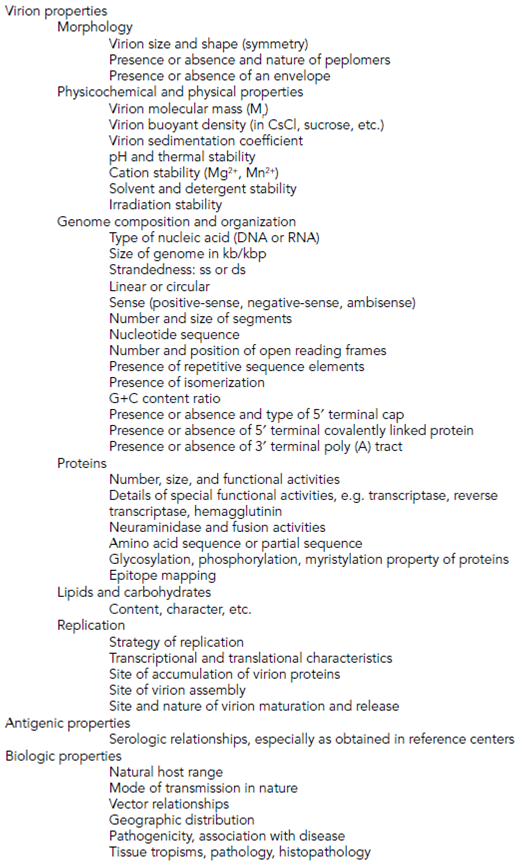Virus orders
An order represents a grouping of families of viruses that share common characteristics that make them distinct from other orders and their families. Orders are designated by the suffix -virales (note the use of italics when stating virus taxonomy) and there are six orders currently approved by the ICTV. The main characteristics of viruses within each order are summarized here and in Table 2, with examples of viruses pathogenic to humans. The viruses within each order may span several host families; for example the Mononegavirales includes viruses that infect animal and plant species. Viruses within this order all possess enveloped capsids and single-stranded, negative-sense, nonsegmented genomes (a definition of ‘sense’ pertaining to virus genomes is given in the next section). The order contains four families, the Bornaviridae, Paramyxoviridae, Rhabdoviridae, and Filoviridae. The Nidovirales are positive-sense, single-stranded, nonsegmented enveloped RNA viruses and comprise the Arteriviridae, Coronaviridae and Roniviridae families; all infect vertebrate hosts. Caudovirales are nonenveloped viruses with double-stranded, nonsegmented linear DNA genomes and viruses within the three families of this order (Siphoviridae, Myoviridae, and Podoviridae) are all bacteriophages; that is they are bacteria-specific.
The order Herpesvirales contains viruses that infect a wide range of animals; enveloped, icosahedral capsids contain a double- stranded, nonsegmented linear DNA genome. There are three families within this order, the Alloherpesviridae, Malacoherpesviridae, and Herpesviridae, which includes the Herpesviruses that infect humans, such as herpes simplex virus. Viruses within the Picornavirales have single-stranded, positive-sense, nonsegmented RNA genomes within naked icosahedral capsids. Within the order, viruses infect a very broad range of hosts, ranging from plants to animals and insects. Tymovirales have similar genomes, but their capsids are enveloped; these viruses are confined to plant hosts. Many viruses have been successfully assigned to one of these six orders, but a greater number of known viruses currently remain unassigned.
Table 1. Some of the properties of viruses used in taxonomy

Table 2. Taxonomic chart of selected virus families
